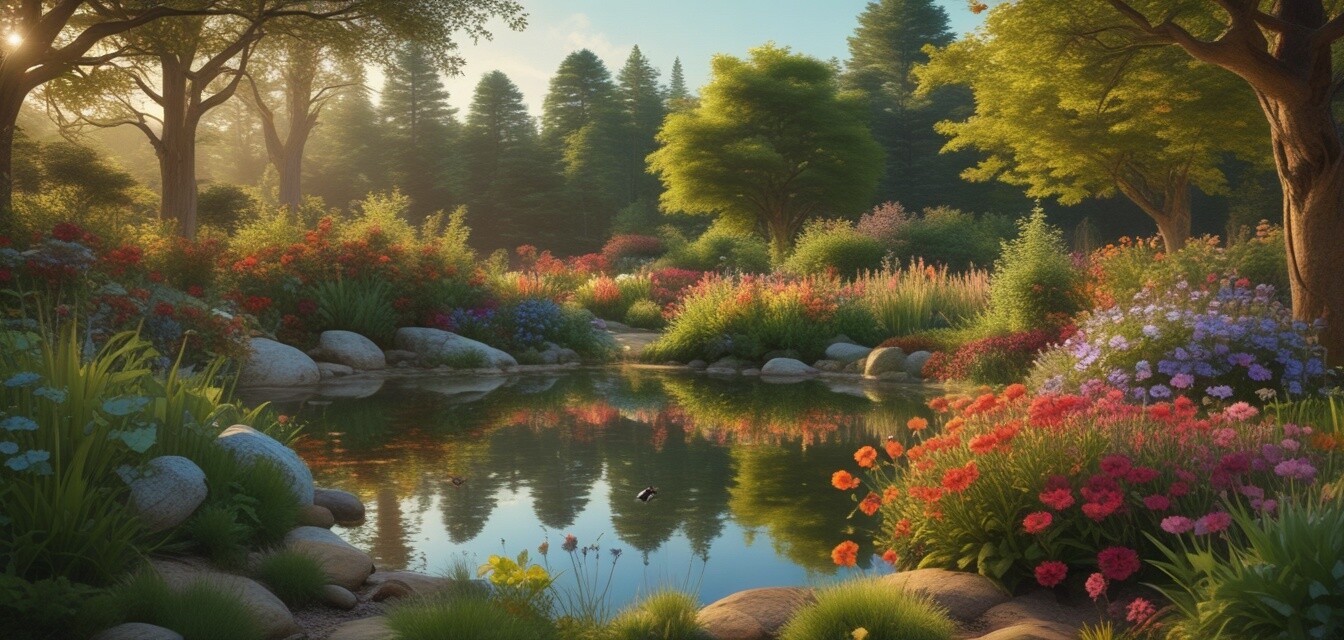
Designing a garden for wildlife habitat
Key Takeaways
- Incorporate native plants to attract local wildlife.
- Provide food sources such as seeds, berries, and nectar.
- Create shelter using shrubs, trees, and logs.
- Include water features to encourage wildlife visitation.
- Implement sustainable gardening practices to maintain a healthy ecosystem.
Gardening is not just about beautifying your outdoor space; it's also an opportunity to support local wildlife. By designing a garden that serves as a habitat for various species, you not only enhance the environment but also create a tranquil retreat for yourself. In this article, we will explore how to create a wildlife-friendly garden, the elements to include, and practical tips to inspire your next gardening project.
Why design a garden for wildlife?
Wildlife habitats are essential for maintaining biodiversity. By creating a garden that attracts and supports wildlife, you'll help numerous species thrive while enjoying the beauty and benefits of nature. Some key reasons to consider designing a wildlife habitat include:
- Encouraging local biodiversity by providing homes for native species.
- Enhancing pollinator populations, which are crucial for flowering plants and fruits.
- Creating a sustainable ecosystem that contributes to environmental health.
- Offering educational opportunities for children and adults alike.
Essential elements for a wildlife habitat garden
Building a garden for wildlife requires a thoughtful approach to design and plant selection. Here are several essential elements to include in your wildlife habitat garden:
1. Native plants
Choosing native plants is crucial as they are better adapted to your local climate and soil conditions. They provide food and shelter for local wildlife without the need for excessive maintenance. Some native plants to consider include:
| Plant Type | Wildlife Supported |
|---|---|
| Wildflowers | Pollinators like bees and butterflies |
| Berry Shrubs | Birds and small mammals |
| Grasses | Ground-nesting birds |
2. Food sources
Provide various food sources that cater to different species. Consider planting:
- Fruits and nuts like blackberries, raspberries, and oaks.
- Flowers that produce nectar, such as coneflowers and sunflowers.
- Seeds and berries for birds and small mammals.
3. Water sources
Water is vital; consider including:
- Birdbaths to provide hydrated opportunities for birds.
- Small ponds to attract frogs, dragonflies, and other aquatic wildlife.
- Create a drip system for plants to ensure they receive adequate moisture without waste.
4. Shelter and nesting
Wildlife needs shelter for safety and nesting. To incorporate shelter:
- Install birdhouses, butterfly houses, or bat boxes in various locations.
- Utilize dense shrubs and trees as nesting sites.
- Leave brush piles or cut logs to provide hiding places for small mammals and insects.
Designing your wildlife habitat garden
Now that we’ve covered the essential elements, how do you bring them together in your design? Here are some tips:
Tips for creating a wildlife-friendly garden
- Start small and gradually expand your wildlife habitat.
- Choose a variety of plants that offer different bloom times and food sources throughout the year.
- Incorporate layered planting—tall plants in the back, shorter ones in the front—to create depth and shelter.
- Provide safe passage for wildlife by keeping your garden free from chemicals and pesticides.
- Connect with local gardening communities for tips and resources.
Maintenance of your wildlife garden
Maintaining your garden to support wildlife does not have to be tedious. Here are some easy practices:
- Regularly check that water features are clean and filled with fresh water.
- Monitor plants for natural pests and use organic methods for management.
- Keep an eye on the balance of plant types and add or remove plants as needed.
- Prune sparingly to encourage new growth while providing necessary shelter.
Inspiring wildlife garden projects
Looking for more inspiration? Explore these projects:
- Creative garden design ideas
- Guides on selecting native plants
- Latest trends in wildlife garden design
"The greatest gift you can give your garden is the life it supports." – Anonymous
Conclusion
Designing a garden that serves as a habitat for wildlife not only benefits the environment but enriches your gardening experience. By employing native plants, incorporating food and water sources, and providing shelter, your garden can flourish while welcoming a variety of wildlife to your backyard. Embrace these design principles, and you’ll transform your outdoor space into a vibrant ecosystem that brings you joy and inspires others.